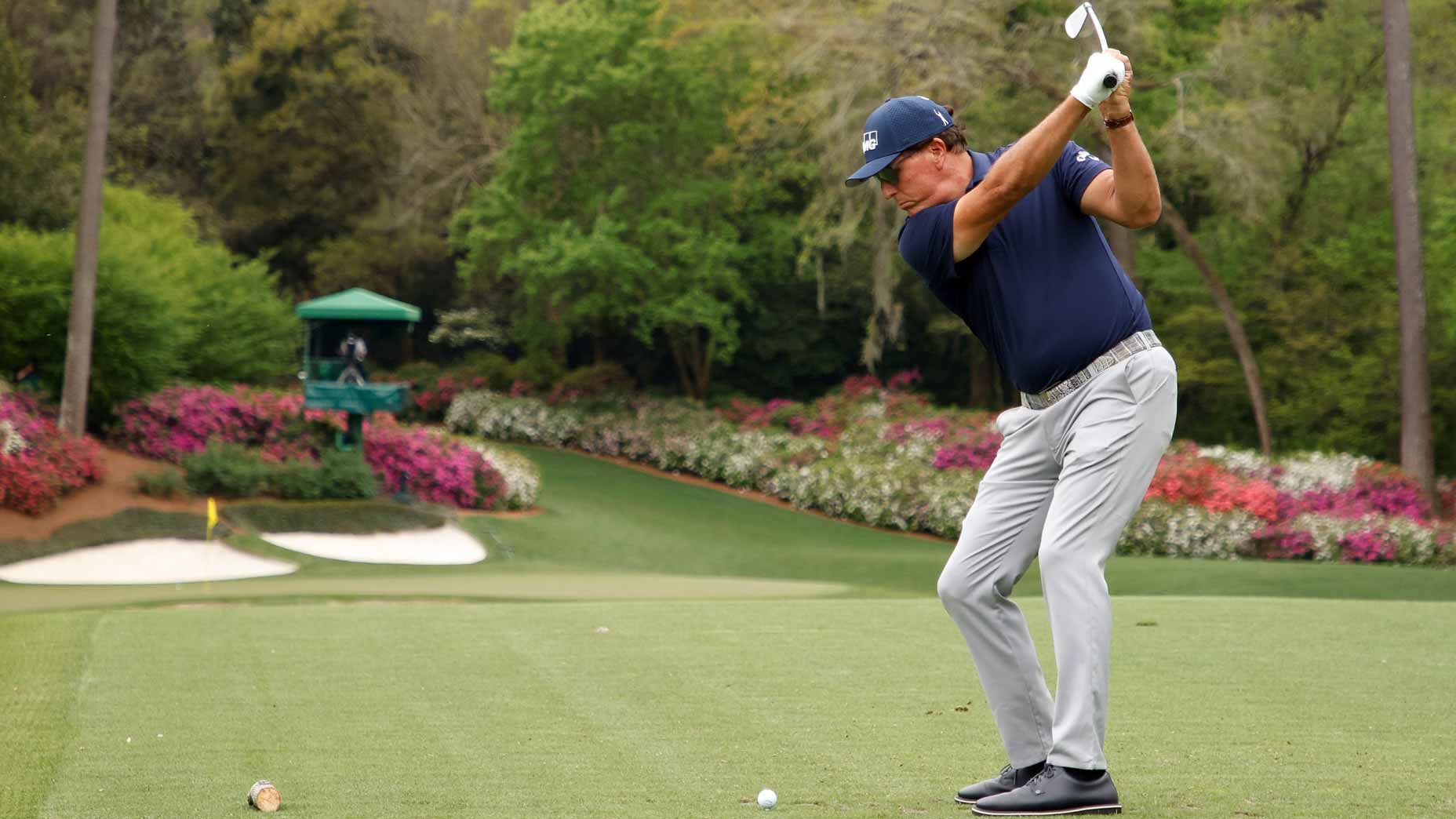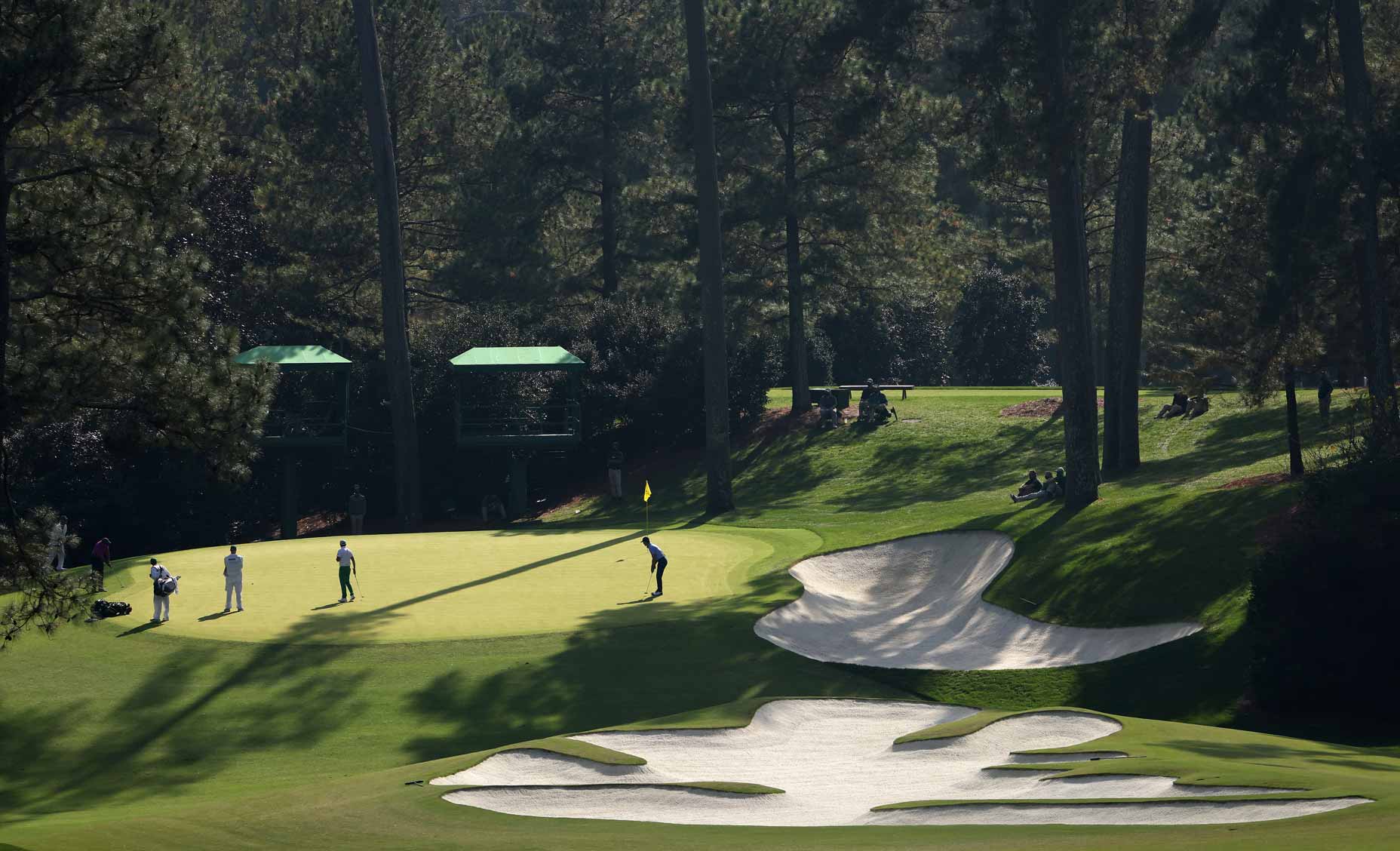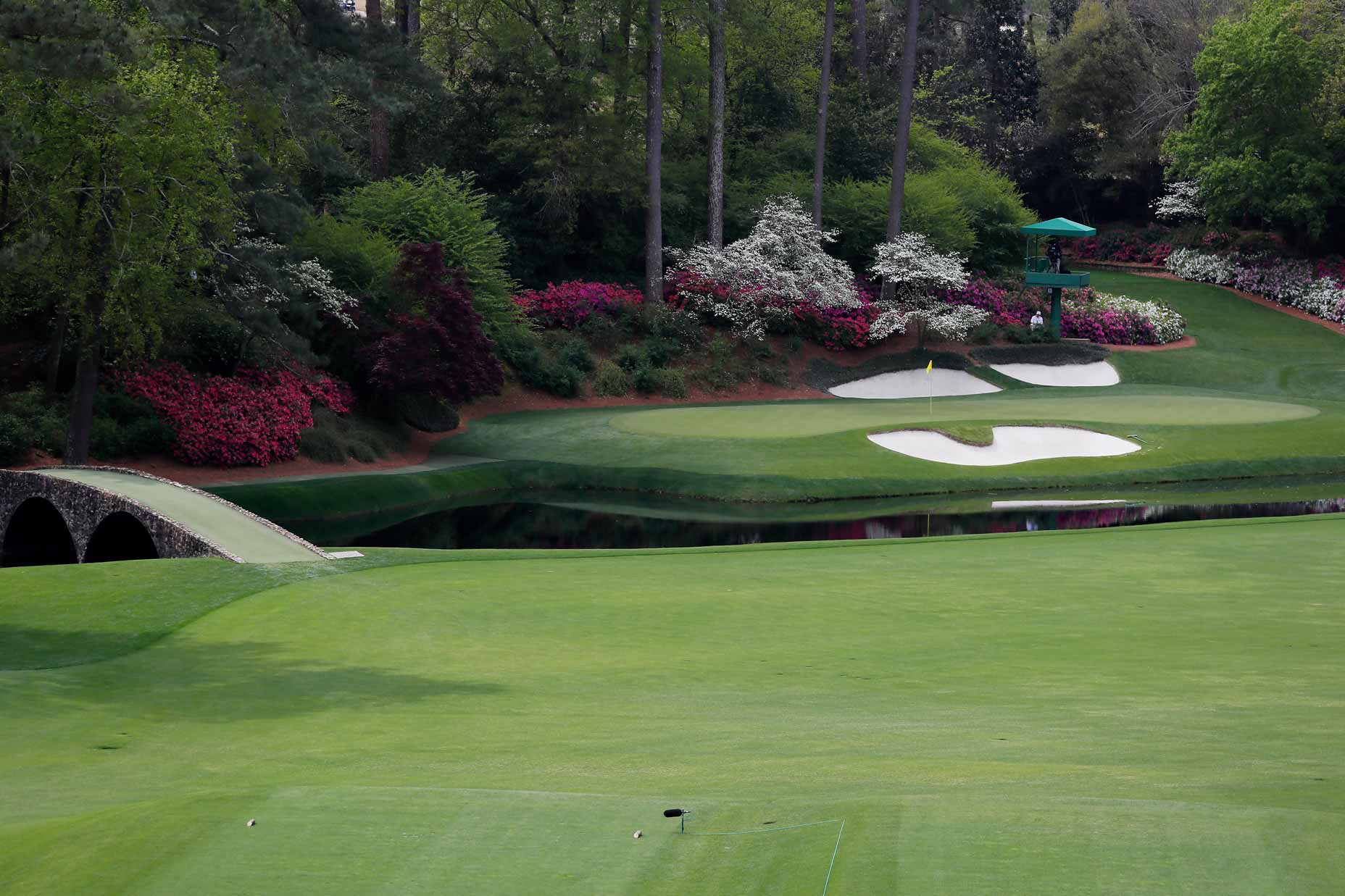
Jared C. Tilton/Getty Images
Left-handed golfers haven’t won many majors, but more than half of them came at Augusta National.
Of the 11 major titles won by southpaws, including last year’s Open Championship by Brian Harman, six came at the Masters — and half of those are Phil Mickelson‘s.
Mickelson’s record speaks for itself at Augusta. Along with the three victories, he has finished inside the top 5 nine other times, including last year when he tied for second, the best-ever Masters finish by a player over 50. In his 30 career Augusta starts, Mickelson owns the lowest scoring average (71.30) of any player with more than 100 rounds played.
There aren’t many players who have the depth of knowledge about the course as Mickelson, and on Tuesday, ahead of LIV Golf Miami, he said he’d be “happy to share information” to the younger generation of players.
But he started by explaining some of the nuances of the course for lefties, like himself and two-time champ Bubba Watson, who was also a part of the press conference.
“It’s actually different for myself and Bubba than a right-handed player because there are shot dispersion and so forth,” Mickelson said.
He started with an “example you wouldn’t think of” with the greenside bunker that guards the right side of the 10th green.

Jamie Squire/Getty Images
“When the pin is back right, if you go in that bunker and a right-handed player comes in there and opens the face on a sand wedge and hits a nice, high, soft shot with little cut spin, it cuts back into the slope, checks up quick,” he explained. “Pretty easy up-and-down. I’ve been in practice rounds where I’ve seen guys throw it up there two feet, no problem.
“But for a left-handed player, if you go in that bunker and you open up that face and hit the ball out with cut spin, it’s working with the right-to-left green and the ball doesn’t stop.
“The best I can do is maybe eight feet, and 10 feet is a pretty good shot, and so that bunker is much more penalizing for me than it would be for right-handed players. So I have to be more cautious there.”
For a second example, Mickelson used Augusta’s famous 12th hole. Rae’s Creek guards the front of the par-3 green and moves closer to the golfer from right to left. The narrow green is angled the same way, with the front left being much closer to the tee than the back right.

Kevin C. Cox/Getty Images
This is where Mickelson says the difference in shot dispersion between lefties and righties comes into play. By shot dispersion, Mickelson means how for a right-hander a miss left, or a pull, will likely carry farther than intended whereas a push, or right miss, will carry shorter. For left-handers, it’s the opposite, where pulls to the right carry farther and pushes left don’t go as far.
Whereas hitting into the the 10th green, being a lefty might force him to be more conservative, swinging from the left on No. 12 allows him to be more aggressive.
“If we aim over the bunker and we pull it a little bit, it goes longer right and we can get to to that back right pin,” Mickelson said. “If we come out of it, it goes short left and still catches the green.
“So 12 is a hole where we get aggressive, Bubba and I, we’re thinking 2 and we are getting after wherever the pin is, where a right-handed player, where it sits opposite their shot dispersion, they have to be a little bit more cautious on that shot.”
Mickelson said not every hole, though, presents major differences for lefties and righties. He cited the par-5 2nd as an example of a hole where dexterity is less of a factor, depending on the pin location.








